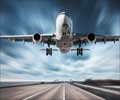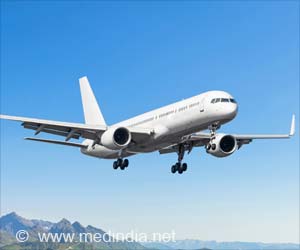Researchers at the Department of Thoracic Medicine at Concord Repatriation General Hospital in Sydney, Australia, have discovered that people with severe obstructive sleep apnea (OSA)
People with severe obstructive sleep apnea (OSA) have increased risk of cardiac stress on airline flights, researchers at the Department of Thoracic Medicine at Concord Repatriation General Hospital in Sydney, Australia, have revealed.
Sleep apnea is a common condition in which breathing stops or becomes very shallow. Obstructive sleep apnea is the most common form of the condition. When it occurs, people can't get enough air through their mouth or nose, and the levels of oxygen in the blood may drop.The researchers found that people with severe obstructive sleep apnea (OSA) on commercial airline flights may have a greater risk of adverse events from cardiac stress than healthy people.
For the study, the researchers compared oxygen levels and ventilation of healthy people and people with severe OSA during simulated flight conditions replicating the oxygen and pressure levels of typical commercial flights that have "cabin altitudes" (a measure of the air pressure and oxygen) ranging from 6,000 feet and 8,000 feet-the maximum allowed, even if the airplane is flying at 30,000 feet.
This is the first study to use these measurements to assess fitness to fly without supplemental oxygen, the team said.
"It is normal for the rate of breathing to increase when air pressure falls. We predicted that patients with OSA would have a much sharper fall in oxygen levels because they might not increase their breathing as much," said Leigh Seccombe, M.Sc., senior scientist in the Department of Thoracic Medicine at Concord Repatriation General Hospital in Sydney, Australia.
"And in fact, we found that patients with OSA do have a lower blood oxygen level before and during aircraft cabin condition stimulation, but that the change in oxygen was similar. We also found that their breathing intensity increases at about the same rate as it does in healthy people," she added.
Advertisement
"In short, the work they do to run the core range of body functions (heart, lungs, brain) is much greater under cabin conditions," said Seccombe, who is currently part of a group working on a consensus statement which will help guide respiratory physicians as to whether their patients are at risk from air travel.
Advertisement
"Half of the patients with OSA would require supplemental oxygen in-flight if current guidelines (for those with lung disease) were strictly followed if these results are typical," she added.
The study was presented at the American Thoracic Society's 2008 International Conference in Toronto on Sunday, May 18.
Source-ANI
RAS/L











